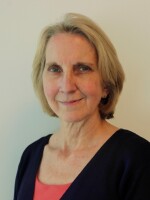MARY LOUISE KELLY, HOST:
The Trump administration says it will now spend billions to help states make COVID-19 testing more widely available. The move is meant to address months of complaints about test shortages. But here's the puzzle. Many labs say they have plenty of tests. So what's the disconnect? Well, it turns out a test is made up of many parts, and there are shortages of different parts at different times in different places, as Sacha Pfeiffer of NPR's investigations team is here to explain.
Hey there, Sacha.
SACHA PFEIFFER, BYLINE: Hi, Mary Louise.
KELLY: So - all right. We're talking about a test for the coronavirus, which I am now learning is not just one piece of equipment. What all are we talking about?
PFEIFFER: So there are several steps involved in COVID-19 testing, and each step requires different equipment. A common analogy I've heard is that to make chocolate chip cookies, you need not just chocolate chips but also flour and sugar and a bunch of other ingredients. And COVID-19 testing is basically like that.
KELLY: Stay with the recipe analogy. What are the ingredients needed for a COVID-19 test?
PFEIFFER: So first, to clarify, we're not talking about antibody tests. Those involve drawing blood to check whether you've recovered from the virus. We're talking about a DNA swab test where a sample is taken from your nose or throat to check if you have an active infection. So the ingredients for a swab test are a swab, of course. You also need a tube, and you need a solution in the tube to keep the sample fresh. That's step one of a COVID-19 test - collecting a sample.
KELLY: And these swab tests - by the way, this is the most common type of coronavirus test.
PFEIFFER: Yes. There are dozens of types of swab tests, and they're usually done at hospitals or community health centers or drive-through testing sites.
KELLY: OK. So just to recap those ingredients, to collect a sample, you need a swab. You need a tube, and then you need that solution you mentioned to preserve the sample.
PFEIFFER: Yes. And then that sample gets sent to a lab for step two, which is genetic material is extracted from the sample. And for that, you need a special machine, plus chemicals called reagents.
KELLY: OK. So we're adding a special machine. We're adding reagents. And then once they get the genetic material extracted, what happens then?
PFEIFFER: That's step three. The genetic material goes into a machine that checks whether it contains coronavirus. If it does, you have tested positive for COVID-19. So there are multiple ingredients in a recipe for coronavirus testing. Here's how Heather Pierce of the Association of American Medical Colleges sums it up.
HEATHER PIERCE: A test is not simply a one-component test but is made up of many different components. If any one of those components is missing or has insufficient quantities, the test can't happen.
PFEIFFER: But Mary Louise, as you mentioned, there have been insufficient quantities and missing components - lots of them.
KELLY: Right - like what? Which components have been missing or just not enough of them?
PFEIFFER: The swabs, the solution, the chemicals. Some weeks, there are shortages of some but not others, or one location has them and another doesn't. But let's focus on swabs because any type of approved swab works with any approved swab test. Swabs are a universal ingredient.
KELLY: Right. And to be clears, when we talk swabs, we're talking basically long Q-tips.
PFEIFFER: Yes, but more specialized than the drugstore kind. They're considered medical devices. They have to be long and flexible enough to get all the way back through your nose to the back of your throat. Here's President Trump on April 17 saying that in the next few weeks, the government would be sending millions of swabs to the states.
(SOUNDBITE OF ARCHIVED RECORDING)
PRESIDENT DONALD TRUMP: Swabs can be done easily by the governors themselves. Mostly, it's cotton. It's not a big deal. You can get cotton easily. But if they can't get it, we will take care of it.
PFEIFFER: But what Trump says about cotton is wrong. The swabs are not made of cotton. In fact, cotton can interfere with test results because cotton contains its own genetic material. So these swabs are typically made of polyester or some other synthetic material. Now, remember, yesterday the White House talked about a plan to increase test supplies going to the states. But let's go back to Vice President Pence on April 20, talking about a phased reopening of the economy. And pay attention to his wording.
(SOUNDBITE OF ARCHIVED RECORDING)
VICE PRESIDENT MIKE PENCE: By our best estimates, we have enough testing capacity today for every state in America to go to phase one.
KELLY: Sacha, I guess that leaves me wondering if testing capacity - Pence's words - if that's not quite the same thing as actually doing testing.
PFEIFFER: Right. It's not quite the same because as we talked about, testing has several steps. It's not just the step where you get swabbed. It's also the step where a lab analyzes your swab sample for the coronavirus. So labs might have machines to do that analysis, but if there aren't enough swabs to collect samples, those machines could be sitting idle.
KELLY: Which means that tests maybe are not actually happening and one missing ingredient, like swabs, can derail the whole thing.
PFEIFFER: Exactly. And tomorrow on Morning Edition, I'll be explaining why the United States has a shortage of something as seemingly simple as swabs.
KELLY: An excellent question which I will look forward to hearing the answer to. Thank you, Sacha.
PFEIFFER: You're welcome.
KELLY: That's Sacha Pfeiffer of NPR's investigations team. Transcript provided by NPR, Copyright NPR.





